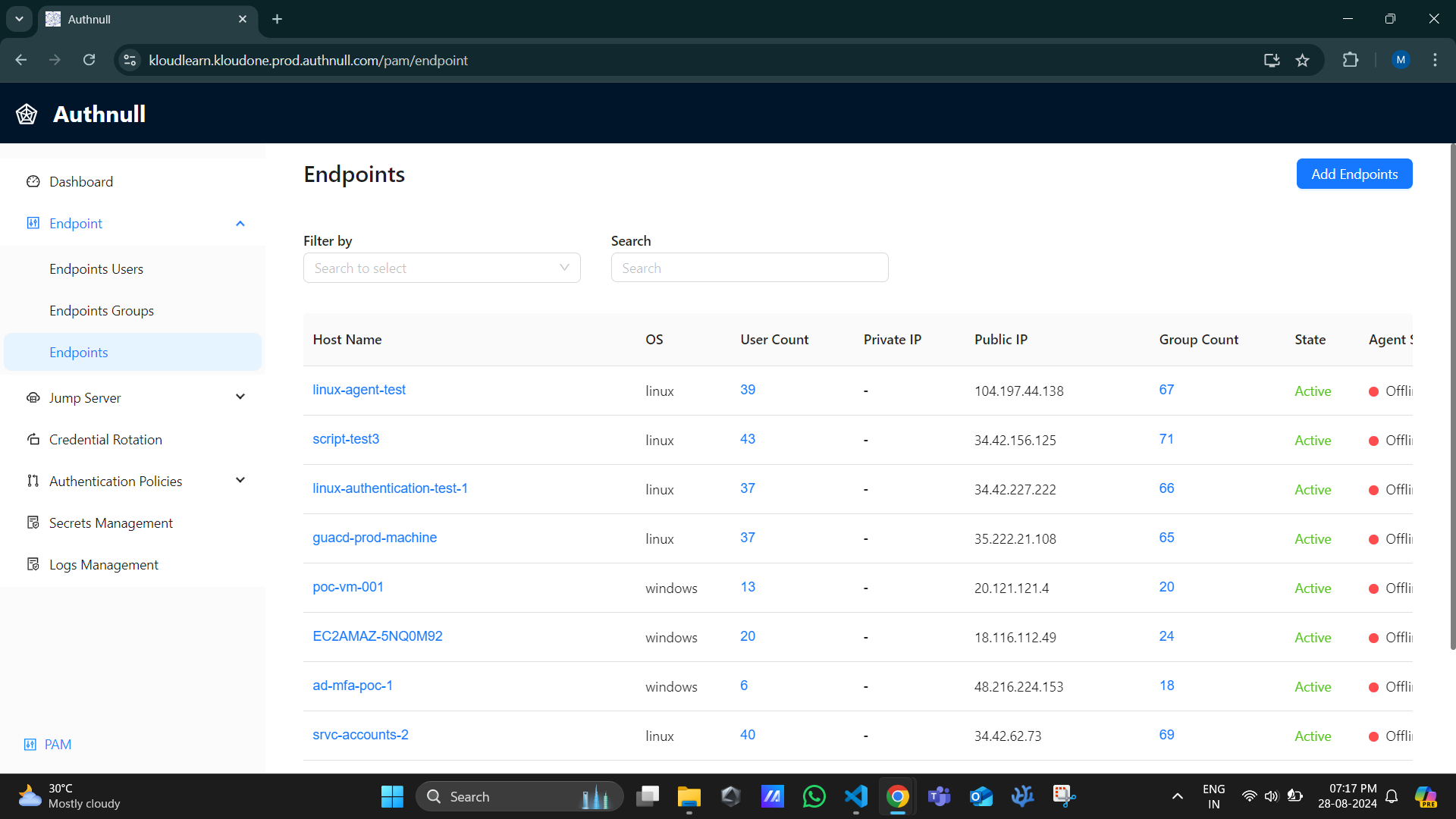Local User and Group Synchronization from an Endpoint in AuthNull
Managing local users and groups across various endpoints can be challenging. AuthNull simplifies this process by providing tools to synchronize local users and groups from individual endpoints into the AuthNull platform.
Overview
Local user and group synchronization ensures that:
- Users and groups created on an endpoint are automatically available in AuthNull.
- Modifications to local user attributes or group memberships on the endpoint are reflected in AuthNull.
- Removal of local users or groups on the endpoint is appropriately managed within AuthNull.
How It Works
1. Endpoint Registration
Before synchronization can occur, the endpoint must be registered within AuthNull. This involves installing the AuthNull agent on the endpoint and ensuring it can communicate with the AuthNull platform.
2. Initial Synchronization
Once the endpoint is registered:
- AuthNull retrieves a list of all local users and groups from the endpoint.
- These users and groups are then imported into AuthNull, preserving their attributes and memberships.
3. Ongoing Synchronization
After the initial synchronization:
- The AuthNull agent monitors the endpoint for any changes to local users or groups.
- Additions, modifications, and deletions are synchronized in real-time or at scheduled intervals, based on the configuration.
Benefits
- Consistency: Ensure that local users and groups across various endpoints are consistently represented in AuthNull.
- Security: Quickly detect and manage changes to local user access or group memberships.
- Efficiency: Reduce manual overhead by automating the synchronization process.
Getting Started
To begin synchronizing local users and groups from an endpoint, navigate to the ‘Endpoints’ section in AuthNull and follow the guided setup process.

For detailed step-by-step instructions and best practices, refer to the Endpoint Setup Guide.
By leveraging AuthNull’s local user and group synchronization features, organizations can achieve a unified view of access across all their endpoints, ensuring security and simplifying management.